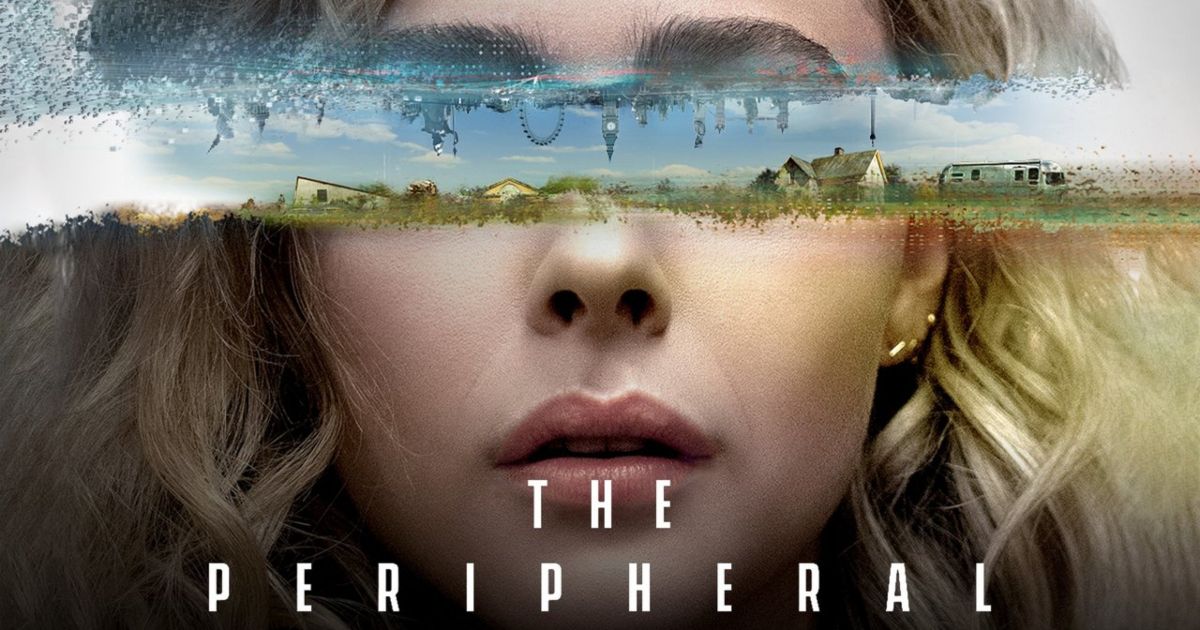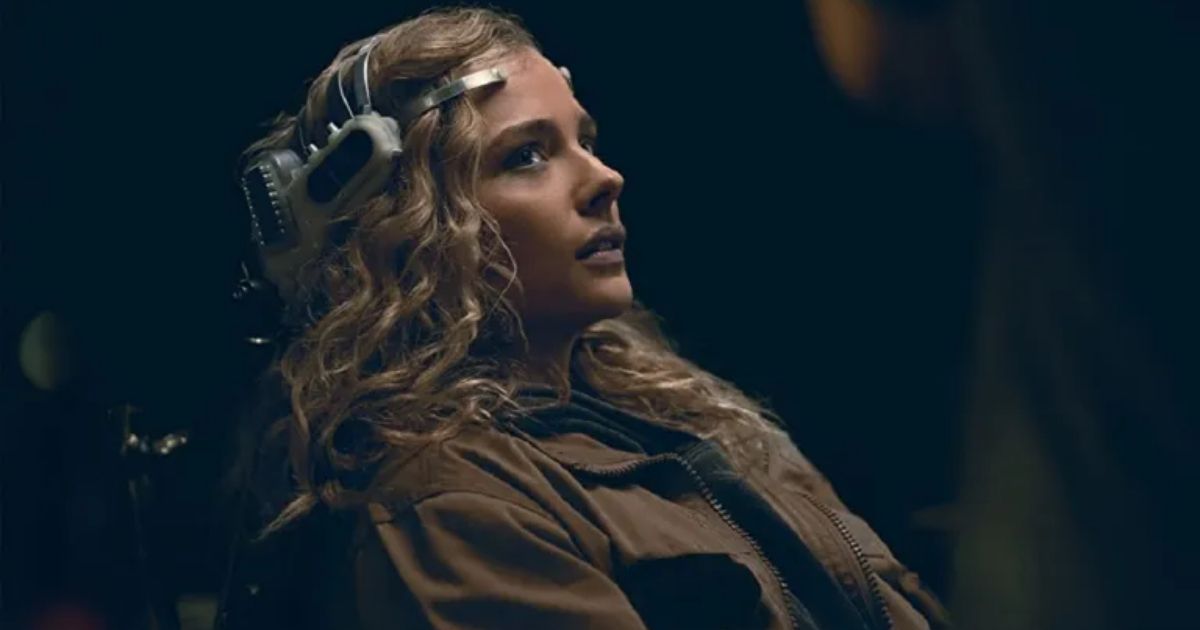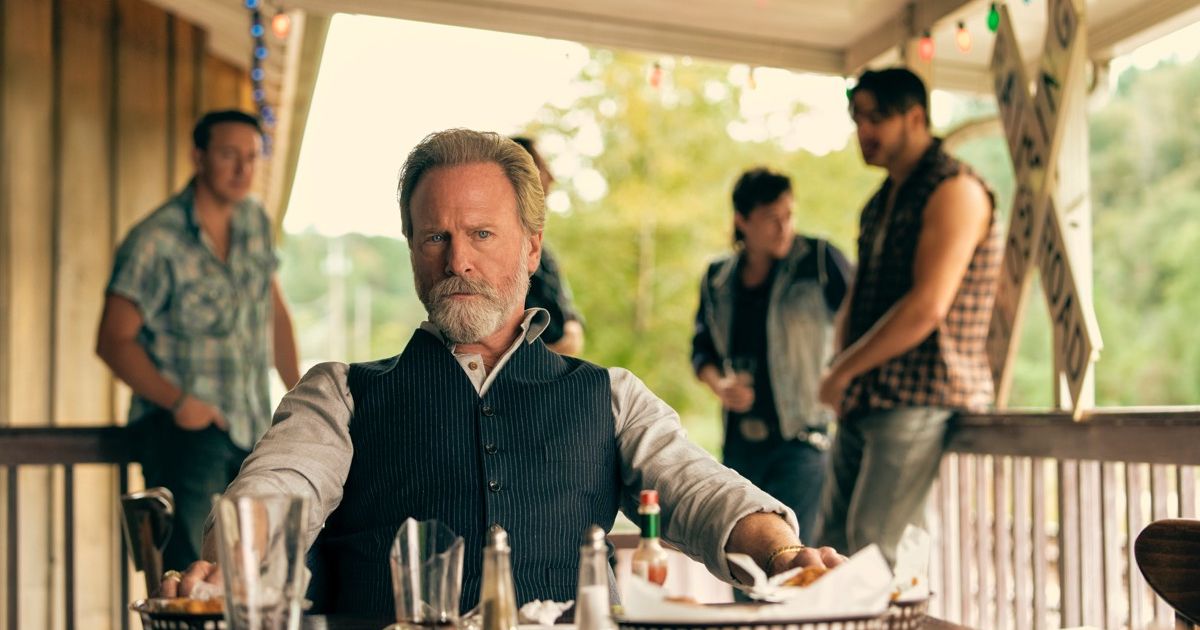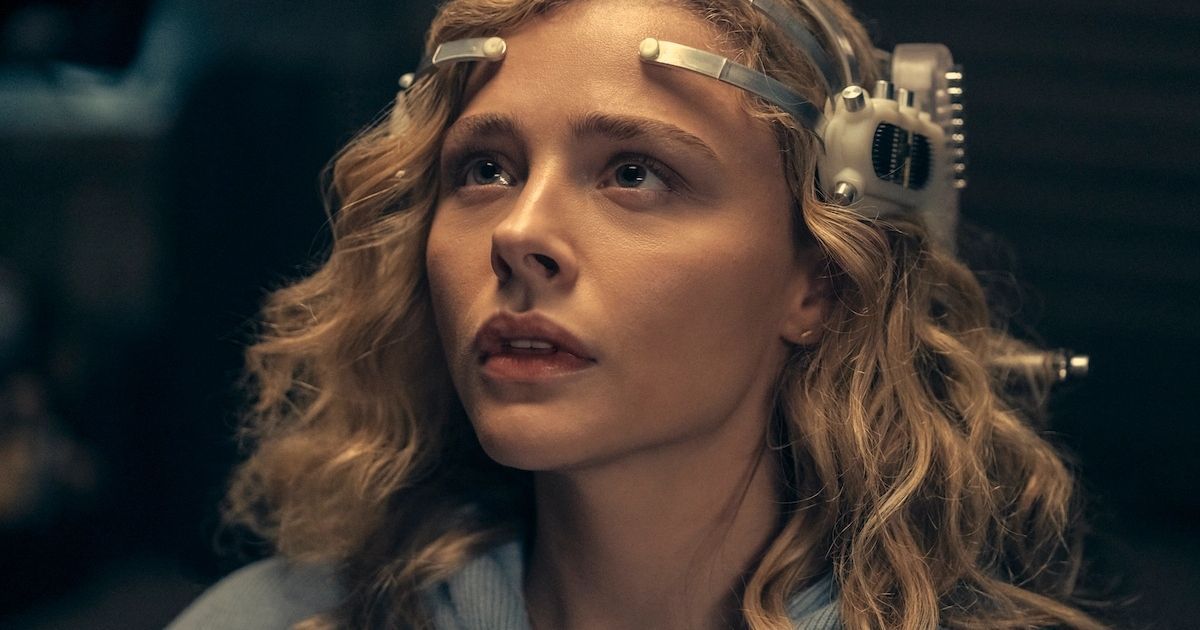"Cyberspace. A consensual hallucination experienced daily by billions of legitimate operators, in every nation, by children being taught mathematical concepts [...] A graphic representation of data abstracted from the banks of every computer in the human system. Unthinkable complexity. Lines of light ranged in the nonspace of the mind, clusters and constellations of data. Like city lights, receding." So wrote William Gibson in the 1984 novel Neuromancer, quite a while before 'cyberspace' became a common term to denote the shared unreality of our digital interactions.
Gibson is credited with creating the 'cyberpunk' aesthetic, merging cinematic neo-noir imagery with visionary science-fiction, relentless action, disgruntled and disaffected working class characters, and intellectual ideas into a truly distinct style. His work has been celebrated and influential, but aside from writing the screenplays for the abhorred Johnny Mnemonic and a couple great episodes of The X-Files, Gibson's vision has never been realized cinematically. The Peripheral, a new series on Prime Video, is here to change that.
A grand, mysterious, and unique show that certainly stands out in the televisual landscape, The Peripheral is a new project from Westworld masterminds Jonathan Nolan and Lisa Joy, along with the brilliant director Vincenzo Natali, and stars Chloë Grace Moretz as Flynne Fisher, a young woman who, while trying to support her struggling family, finds herself swept up in a deadly battle for the future. While it may be occasionally confusing and bite off more than it can chew, The Peripheral does justice to Gibson's vision, creating a distinct, well-acted, and labyrinthine sci-fi mystery in the process.
The Strange Sci-Fi World of William Gibson's The Peripheral
The opening images of The Peripheral are stunning and set the tone, telling audiences that this is not their world. The camera moves through the smoke of launched cannonballs and heavy artillery, past archaic wooden sloops (those old-fashioned pirate ships), hovering over the water until it reaches a park bench occupied by a man named Wilf. Sitting on the sidewalks of London, Wilf watches this fiery orchestra of violence in what seems to be a tiny river carved out through the city. It's all very surreal and disorienting, and a perfect introduction to this world.
Of course, it's also confusing, even if it does mostly all come together in the end. Like much of The Peripheral's first half, none of this introduction is explained well, and The Peripheral consistently drops you into already fleshed-out, pre-developed worlds where there is little to no exposition that would orient a viewer. While this may be frustrating or confusing to a viewer, if anything, it captures the true spirit of Gibson's literary work, which so often eschewed traditional explanations and were written as if from the future. Readers (and now viewers) simply had to become accustomed to this brave new world.
If viewers are fine wading through the waters of this environment, they'll find themselves floating into the quiet life of the Fishers. Flynne may be the young, gorgeous daughter in the Fisher family, but she's certainly the most capable of the bunch. Her life in the beautiful Blue Ridge mountains of 2033 is simple and somewhat depressing, taking care of her deeply ill mother and helping her snide, somewhat lazy brother Burton.
Flynne makes a little money in the usual ways of the 'convenience and hospitality industry,' but the biggest payoffs often come when she and her brother take on difficult missions in a completely virtual world. When the Fishers get access to a brand-new, off-market virtual reality headset, they discover a new way to make money. They just don't realize how incredibly dangerous it will become.
Virtual Reality and Time Travel in The Peripheral
Flynne thinks that she is participating in just another video game; in The Peripheral, just as in several other futuristic sci-fi titles (including Ready Player One), achievements in VR games can be extremely lucrative. That is, of course, an idea that grows more and more realistic, as video games become highly profitable (something brilliantly satirized in the series Players) while actual physical sports are increasingly looked down upon, whether for the neurological damage they cause players or the racial and financial disenfranchisement endemic in the industry.
This supposed video game seems more real than anything else she's played, though. Flynne painfully comes to learn that she's not simply embodying a 'sim' in a completely fictional digital word; instead, she is actually connecting with a body nearly 70 years in the future, where a faction of individuals need her help. She can't exactly refuse — the moment she put on the headset, she put her beloved family at risk, and a bounty was placed on them from the future.
The Peripheral does an excellent job at not only visually distinguishing between the 'real' world and the virtual one of the future, but of also depicting the appeal and profitability of the VR world. Creating a semi-Southern atmosphere within the Appalachian region and the gorgeous, natural landscape of North Carolina, not to mention the trailer park chic of its setting, The Peripheral has a kind of working-class, redneck dignity which makes it extremely iconoclastic in the sci-fi landscape of polished, futuristic metropolises. This rural setting makes The Peripheral stand out.
Of course, the show also fashions a 22nd-century London, but even that futuristic world seems disheveled and greatly underpopulated. It's a desolated metropolis and provides a nice balance with the Blue Ridge mountains of the 2030s. The Peripheral alternates between Flynne's experiences in her time period and her experiences circa 2100.
Chloë Grace Moretz Leads a Committed Cast
There are a bevy of complications and subtleties which, while ultimately explained in a wholly suitable fashion, may nonetheless confuse or frustrate viewers. There is a lot going on in The Peripheral, with characters and entire action sequences existing without any explanation, so it demands the patience, faith, and trust of its audience. Like Gibson's oeuvre, it doesn't spoon-feed exposition, and is instead located in a fully developed world with or without any viewer to witness it.
Chloë Grace Moretz does a great job as a young woman burdened with a demanding family but who is nonetheless tougher and more resilient than most of the people around her. She's beautiful inside and out here, creating a through line between the rural world of the 2030s and the stark urban world of 2100.
Jack Reynor is excellent as her brother Burton Fisher, a man who could strike the appearance of a scumbag if one jumped to conclusions or failed to probe deeper. A committed family member who is nonetheless enjoying a hazy and lazy rural existence in the woods, lounging by his trailer with or without his group of friends, making money in the most passive way possible. He is one of several characters in this film who are haunted by the specter of military involvement, one of the most subtle yet interesting thematic aspects of The Peripheral.
Vincenzo Natali Reunites With Westworld Creators for The Peripheral
Jonathan Nolan and Lisa Joy bring the same sprawling, intelligent sci-fi magic that they summoned with Westworld, and yet The Peripheral is fittingly much more human. It taps into the realism and humanity that is often looked over in Gibson's work, while also fully diving into his world with no compromise.
The great Vincenzo Natali (director of the philosophical masterpiece Cube, Cypher, Nothing, and more) directs the four best episodes here, bringing the same confident vision which elevated his episodes of Hannibal and Westworld. Natali knows Gibson's work very well and directs it with surprisingly literary intelligence that is in no way tampered by the complicated plot, intricate visuals, and sprawling scope. The Peripheral may have confusing moments and some frustrating sequences, but all in all, it's probably the best Gibson adaptation to date, and a worthy sci-fi successor to Westworld.
Produced by Kilter Films, Amazon Studios, and Warner Bros. Television, The Peripheral is available on Prime Video beginning Oct. 21st.





